Are you installing new cabinets and want to learn about toe kicks and their dimensions? Well, you've come to the right place. We've done the research to answer all your questions regarding toe kicks, whether they're necessary, how to frame a toe kick, and the types of wood best suited for the project.
The standard dimensions for a toe kick are 3-inches high and between 3 and 4-inches deep.
What if your existing toe kick is damaged? Can you use a different material besides wood? Keep reading to learn everything you need to know about toe kicks.
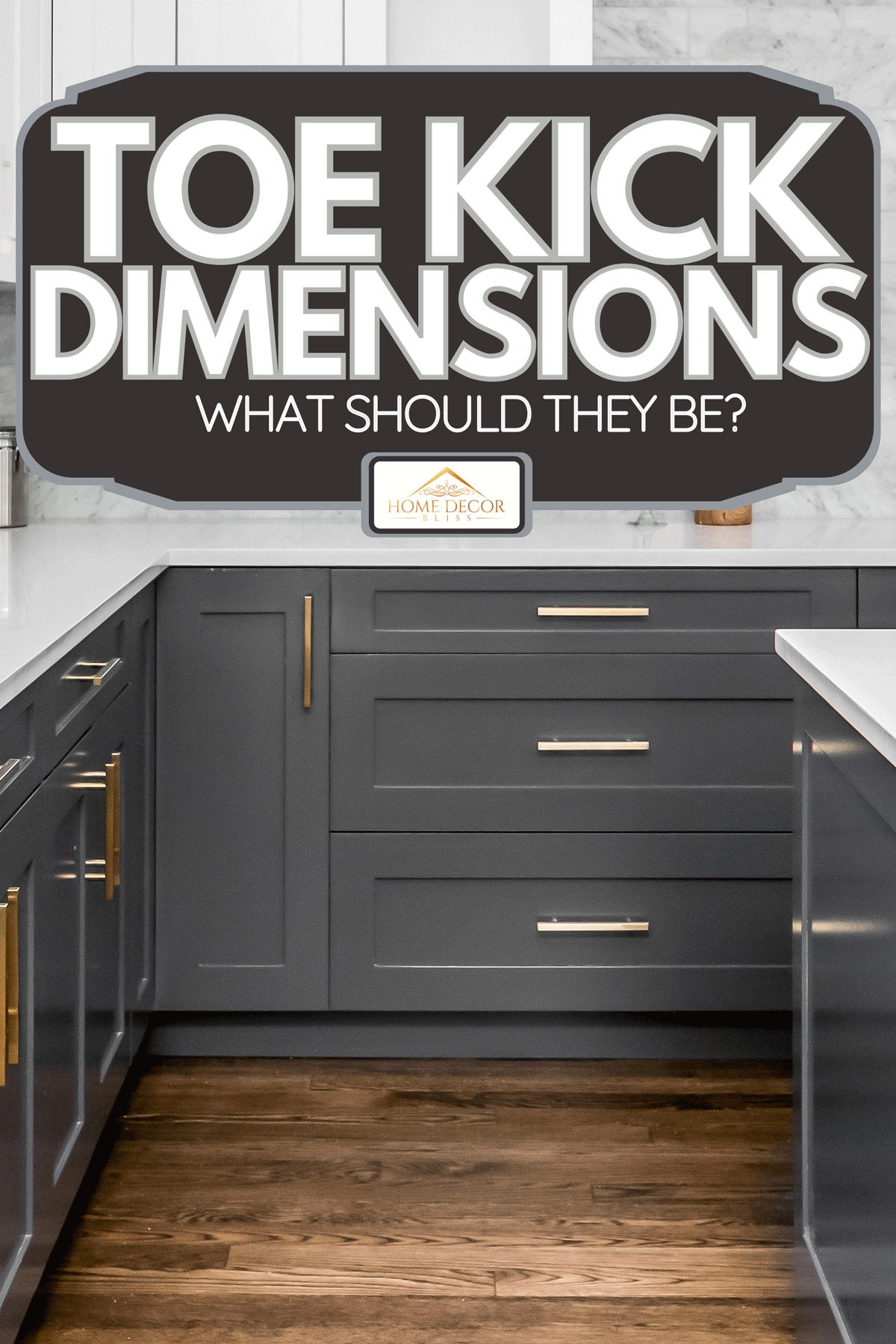
What Are The Dimensions Of A Toe Kick?
Typical toe kick dimensions range between 3 and 4-inches high and 3 to 4-inches deep. These dimensions vary slightly because installing a toe kick may require simple adjustments to account for unlevel kitchen floors.
The purpose of a toe kick or kick space is to allow your toes to slide beneath the cabinets so that you can get closer to the countertop or work area without sacrificing storage space inside of the cabinets.
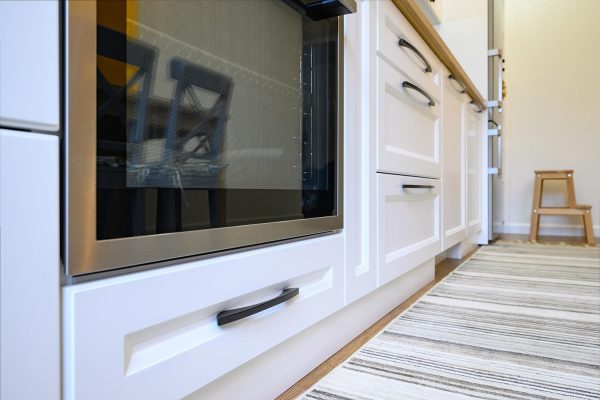
What Is A Toe Kick?
The toe kick is also known as the kick space or toe space. It is a recessed space at the base of most floor-mounted cabinets with a kickboard or toe space plate at the back of the recessed space. The kick space is the area where the floor meets the recessed platform that most cabinets rest upon. It helps prevent injuries such as stubbing your toe on the bottom of your cabinets and allows access to the countertop more easily.
We may include affiliate links and curated AI content to highlight top design styles.
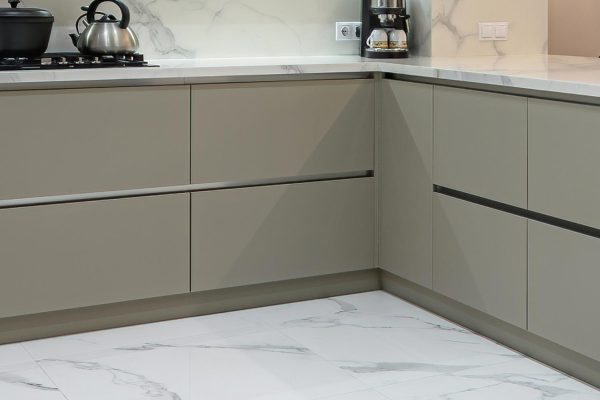
Toe kicks help to reduce stress on your back and hips by allowing you to stand closer to the countertop. This is beneficial to your body because you don't have to bend and strain your back. They also give your cabinets a more finished look.
Is A Toe Kick Necessary?
No, a toe kick is unnecessary, but it is preferred in most modern homes. The toe kick or kick space is essential because it creates a recess for your feet to slide beneath the cabinets comfortably. This allows you to stand closer to your workspace or countertop. Any cabinet you're going to be standing in front of for prolonged periods should have one.
Many modern homes use this extra hidden space to add convenience to their space. The gap can accommodate heating or ventilation ducts, drawers for extra storage, or even additional lighting. It's also nice to have a cushion or bumper to help prevent damage to the cabinets while cleaning, like mopping, sweeping, and vacuuming.
How Do You Frame A Toe Kick?
The first thing to know is that most walls and floors in an average home are not perfectly square or level. This will need to be addressed if you want an even and level countertop. There are three basic approaches to installing toe kicks:
Integrated Kick
A cabinet with an integrated kick has end gables, meaning that the left and right ends of the cabinet are notched so that a kickboard can be attached to the vertical edges of the toe kick after installation. Using this installation method, you would start at the highest point in the floor and shim as necessary to keep the run level as you install the kickboard.
A shoe molding, or base shoe, is a thin strip of molding used to complete the baseboard's finished look. It's added to the toe kick to hide the gap at the bottom and painted to match the baseboard.
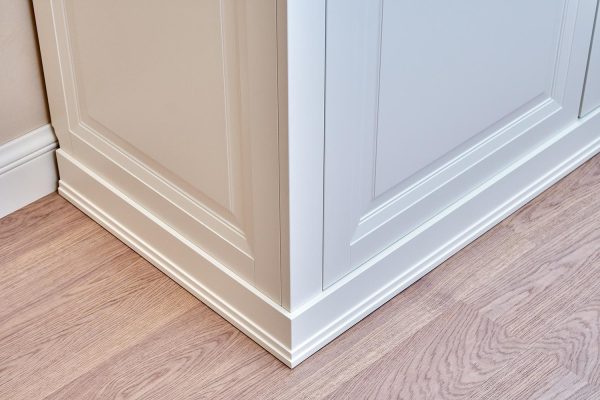
FlexTrim Shoe Molding
This shoe molding is 8-feet long, and it's flexible, making it easy to work with. You can paint it or stain it, and it has an adhesive backing, so installation is a snap.
Click here to see this molding on Amazon.
Adjustable Legs

Cabinets with adjustable legs for the toe kick can move individually to level the cabinets as necessary. The legs will either have a built-in bracket that the toe kick will slide into, or you can find clips with brackets that snap onto the cabinet's legs. The brackets will have holes in them, allowing you to fasten the toe kick board securely.
This method is the quickest and easiest way to create a toe kick. It does have its downsides, though; the legs or clips might break if they're accidentally hit with a mop or broom.
Desunia Toe Kick Clip
This toe kick clip snaps right onto your cabinet's legs to provide a surface to attach to the toe kick board. They're only available in a black finish, but they won't be visible behind the toe kick.
Click here to see these clips on Amazon.
Separate Full-Run Kick
A full-run kick is a long rectangular board custom-built to support several separate cabinets in one continuous run. Individual full-run kicks usually consist of 3/4-inch plywood and are quick and easy to install using support blocks and shims.
Once the kick is level, the cabinets will be gently set on top of it; then, you can secure the cabinets to the wall and each other.
WOODNSHOP Marine Grade Plywood
This marine-grade plywood is an excellent choice for toe kicks in kitchens and bathrooms due to its water resistance. It's 3/4-inch thick, 2-feet wide, and 4-feet long, meaning it's large enough to make several toe kicks.
Click here to see this plywood on Amazon.
What Type Of Wood Is Used For A Toe Kick?
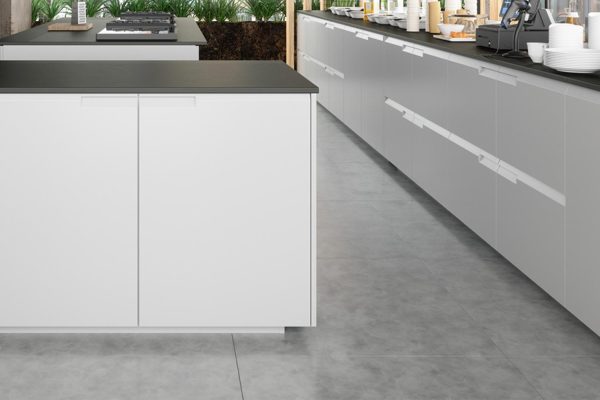
You can make a toe kick out of any type of wood, but you may want to consider the wood species used to make the kitchen cabinets and existing baseboard. Consistency is important when planning your kitchen design.
The most common materials for toe kicks are laminate wood or paint-grade ¾ inch plywood. Plywood blocks or cedar shims are good choices if you need extra support.
Barrington Hardwoods LLC Red Oak Board
These red oak boards come in a pack of two and are 3/4-inch thick, 4-inches wide, and 48-inches long. You can use paint or stain on red oak to match it to your kitchen. It's also available in various lengths to meet the needs of your project.
Click here to see these boards on Amazon.
Can You Use Materials Other Than Wood To Make A Toe Kick?
Wood is the most common material for toe kick construction, mainly because it is easiest to match to the baseboards and the cabinets themselves, but other materials are acceptable. Some homeowners use metal or plastic when installing a toe space beneath the cabinets.
Toe kicks can take damage over time, and although they are easy enough to replace, a metal option will last longer than wood.
SIBU Toe Kick Cover Plate
You can install this adhesive metal cover directly over wood, or composite toe kicks to provide extra protection. It's easy to install, and it's available in different heights to meet your needs. With a 102-inch length per roll, it should be enough to tackle most projects.
Click here to see this cover on Amazon.
How To Replace An Existing Toe Kick?
Water damage, physical abuse, and normal wear and tear can result in a need for replacement. It might seem overwhelming, but the process is a piece of cake. Just be sure to use caution whenever you're handling tools and wear proper safety gear when working.
You will start by removing the damaged kickboard by prying it off with a simple claw hammer. Then, you can install the new kick plate using 1 1/2-inch pin nails or construction glue. Start by securing the new kickboard at the ends of the cabinet, then work your way inward, spacing the fasteners every 6 to 8-inches.
Liquid Nails 3-Pack Adhesive
This construction adhesive is perfect for the average do-it-yourselfer. It doesn't require a caulk gun or a pneumatic nailer, making it an excellent option for anyone looking to replace their toe kick without investing in a bunch of tools. Each tube contains 4-ounces of easy-to-apply glue.
Click here to take a look at this adhesive on Amazon.
Toe Kick Competence
Now that you know what size an average toe kick is and its purpose, you're ready to take on your next big project. Don't forget to weigh your installation and material options to determine what type of toe kick will work best for your home. Have fun remodeling and enjoy your home's new look!
You May Also Enjoy
If you're looking for guidance on replacing your bathroom vanity and how to integrate a toe kick into it, read our article "How Tall Should the Bathroom Vanity Be?"
If you are planning an overhaul of your entire kitchen area, read our article "Best Colors For Kitchen Cabinets And Countertops [6 Awesome Combinations!]" to gain inspiration for your remodel.







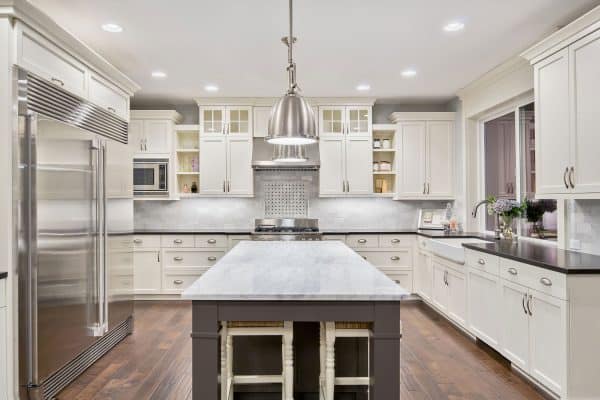

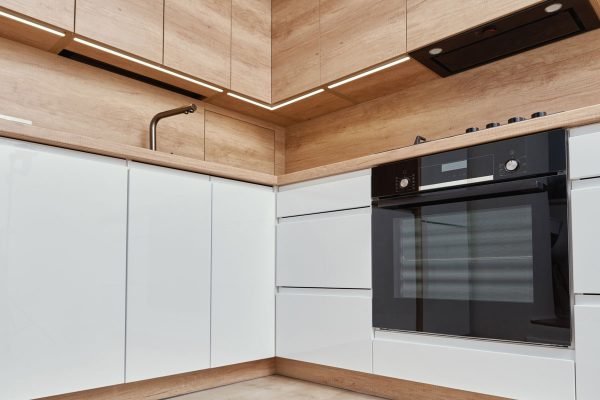
What color are the dark gray cabinets in the picture about toe kicks?